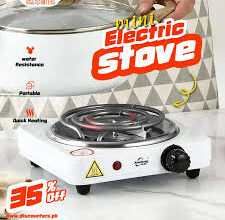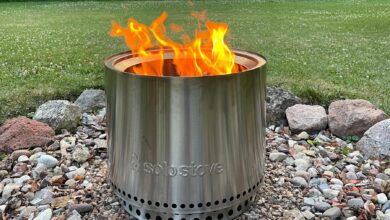Ultimate Guide to Pellet Stoves: Everything You Need to Know for Efficient, Eco-Friendly Heating 2024

Introduction to Pellet Stoves
Pellet Stoves in recent years, pellet stoves have surged in popularity among homeowners looking for an efficient and eco-friendly way to heat their homes. This high-performing heating solution not only reduces reliance on fossil fuels but also provides a cost-effective option for maintaining a cozy, warm environment throughout colder months. For anyone considering adding a pellet stove to their home, this comprehensive guide covers everything from how these stoves work to the key factors you’ll want to consider before making a purchase. Let’s dive into the world of pellet stoves and discover why they’re quickly becoming a top choice for sustainable heating.
What is a Pellet Stove?
A pellet stove is a type of heating appliance designed to burn compacted wood or biomass pellets. It provides efficient, clean-burning heat, primarily for residential spaces, though some larger models can warm an entire house. The pellet stove’s innovative design makes it a compelling alternative to traditional wood-burning stoves, fireplaces, and even gas heaters.
Most pellet stoves use wood pellets, made from compressed sawdust or wood shavings, as their fuel source. The compressed nature of the pellets results in a high-energy output with minimal waste, making pellet stoves highly efficient compared to traditional wood-burning options. While there are different types of pellet stoves, all are designed with the primary goal of delivering heat safely and efficiently.
How Pellet Stoves Work
Understanding the inner workings of a pellet stove is key to appreciating its efficiency. A pellet stove operates by using a controlled fuel supply system, which gradually feeds pellets from a hopper into the burn pot. This process is automated, meaning the stove controls the pellet supply and combustion rate, providing steady and consistent heating.
The combustion process involves igniting the pellets with an electric igniter, after which a fan blows air over the fire to increase combustion efficiency. A second fan directs heated air out into the room, allowing the stove to distribute warmth evenly and effectively. Since pellet stoves rely on electricity to operate their fans and igniters, they require a nearby power source to function.
Benefits of Using a Pellet Stove

Energy Efficiency and Consistent Heating
Pellet stoves are renowned for their energy efficiency, with many models achieving ratings of over 80%. This high-efficiency rate is due to the controlled combustion process, which ensures that almost all of the fuel is converted into heat. Unlike traditional wood stoves, which can lose up to 40% of their energy through the chimney, pellet stoves minimize waste by maximizing heat output and minimizing smoke.
Environmental Advantages
For those concerned about their environmental footprint, pellet stoves are a more sustainable choice. Pellets are typically made from renewable materials like sawdust, wood chips, and agricultural waste, which would otherwise go to landfills. By using renewable fuel and producing low emissions, pellet stoves offer an eco-friendly heating solution that can contribute to reduced air pollution compared to other heating options.
Cost-Effectiveness
Pellet stoves are often more cost-effective than heating options like electric or gas heating systems. Though the upfront cost may be higher than traditional fireplaces, the long-term savings from lower energy bills can make pellet stoves a smart financial choice. Additionally, the price of wood pellets is relatively stable, and pellet stoves generally have a longer lifespan with proper maintenance, adding to their value over time.
Types of Pellet Stoves
When shopping for a pellet stove, you’ll encounter several types to choose from. Each type offers unique features and benefits, so understanding their differences can help you find the best match for your home.
Free-Standing Pellet Stoves
Free-standing pellet stoves are self-contained units that can be placed almost anywhere in a room with adequate venting. These stoves are ideal for those who want a flexible heating option that doesn’t require extensive installation. They can add a rustic aesthetic to a room while providing an efficient source of heat.
Pellet Stove Inserts
A pellet stove insert is designed to fit into an existing fireplace, essentially transforming it into an efficient pellet-burning appliance. Inserts are a great choice for homeowners who want to maintain the classic look of a fireplace but prefer the efficiency and convenience of a pellet stove. They are also a space-saving option for those who already have a chimney and want a seamless integration.
Wall-Mounted Pellet Stoves
For those with limited floor space, a wall-mounted pellet stove can be an excellent solution. These stoves are compact and can be attached directly to a wall, making them a good choice for small rooms or apartments. Wall-mounted pellet stoves can be vented through an external wall, minimizing installation requirements.
Key Features to Consider When Buying a Pellet Stove
Choosing the right pellet stove involves evaluating several key features, each of which can significantly impact its performance and convenience.
BTU Output and Heating Capacity
The heating power of a pellet stove is measured in British Thermal Units (BTUs). To heat a standard room effectively, you’ll need to select a stove with a BTU output that matches the room size. Small rooms may only need a stove with around 20,000 BTUs, while larger spaces may require upwards of 50,000 BTUs.
Hopper Size and Feed Rate
The hopper is the part of the pellet stove that stores pellets before they are fed into the burn pot. A larger hopper size allows for more pellets to be stored, reducing the frequency of refilling. For those who prefer minimal maintenance, a pellet stove with a large hopper size and adjustable feed rate may be ideal.
Venting Options

Pellet stoves require venting to safely expel combustion gases. There are various venting options, including direct venting and chimney venting. Direct venting allows the stove to be vented through an exterior wall, making it a practical choice for homes without existing chimneys.
Installation Requirements for Pellet Stoves
Before installing a pellet stove, you’ll need to consider various installation requirements. Proper planning can ensure safe and efficient operation.
Choosing the Right Location
The location of your pellet stove is important for maximizing heat distribution and ensuring safety. Ideally, the stove should be placed in a central area of the home, away from furniture or flammable materials. It’s also essential to keep a clear path to the hopper for easy refilling.
Venting and Chimney Needs
Venting is a critical aspect of pellet stove installation, as it directs harmful gases safely out of the home. Most pellet stoves are vented through a direct vent system, which involves piping that runs through an exterior wall. For homes with chimneys, some pellet stoves can be vented directly into the chimney, but this may require a professional installation.
Permits and Regulations
Depending on your location, installing a pellet stove may require permits and adherence to specific building codes. Before purchasing a stove, check local regulations and secure any necessary permits to avoid potential issues.
Operating a Pellet Stove
Learning how to operate your pellet stove efficiently can enhance its longevity and optimize performance.
Starting and Adjusting the Stove
To start a pellet stove, you typically load the pellets into the hopper and set the desired temperature. Many stoves feature automatic ignition, simplifying the process. Once the stove is on, you can adjust the heat output by changing the feed rate and airflow settings to maintain a comfortable temperature.
Managing Fuel Supply and Refilling
Pellet stoves need regular refills to keep running, especially in colder months. Refilling the hopper can vary based on the stove’s hopper capacity and how often it’s used, but most stoves require daily or twice-weekly refilling. For efficient operation, keep pellets in a dry, cool storage space.
Frequently Asked Questions (FAQs) About Pellet Stoves
1. What is a pellet stove? A pellet stove is a heating appliance that burns compressed wood or biomass pellets to generate heat. It’s a clean, efficient, and eco-friendly heating option.
2. Are pellet stoves environmentally friendly? Yes, pellet stoves are considered eco-friendly as they use renewable fuel sources and produce minimal emissions compared to traditional wood-burning stoves.
3. How much does it cost to run a pellet stove? The cost of running a pellet stove depends on pellet prices and usage frequency but typically costs less than electric or gas heating.
4. Do pellet stoves require electricity? Yes, pellet stoves need electricity to power fans, igniters, and other components, but they consume less power than most electric heaters.
5. Can I install a pellet stove myself? Installing a pellet stove can be complex and often requires professional installation to ensure safe venting and compliance with local building codes.
6. What type of pellets are best for a pellet stove? Wood pellets are the most common choice, but some stoves can also burn other biomass pellets like corn. It’s essential to check your stove’s fuel compatibility.
Conclusion
In summary, pellet stoves offer a powerful, eco-friendly solution for those looking to heat their homes efficiently. With options for every home layout, multiple fuel types, and manageable costs, pellet stoves can cater to diverse heating needs while reducing environmental impact. Whether you’re drawn to their energy savings, sustainability, or convenience, a pellet stove can be an excellent long-term investment in home comfort and warmth.



